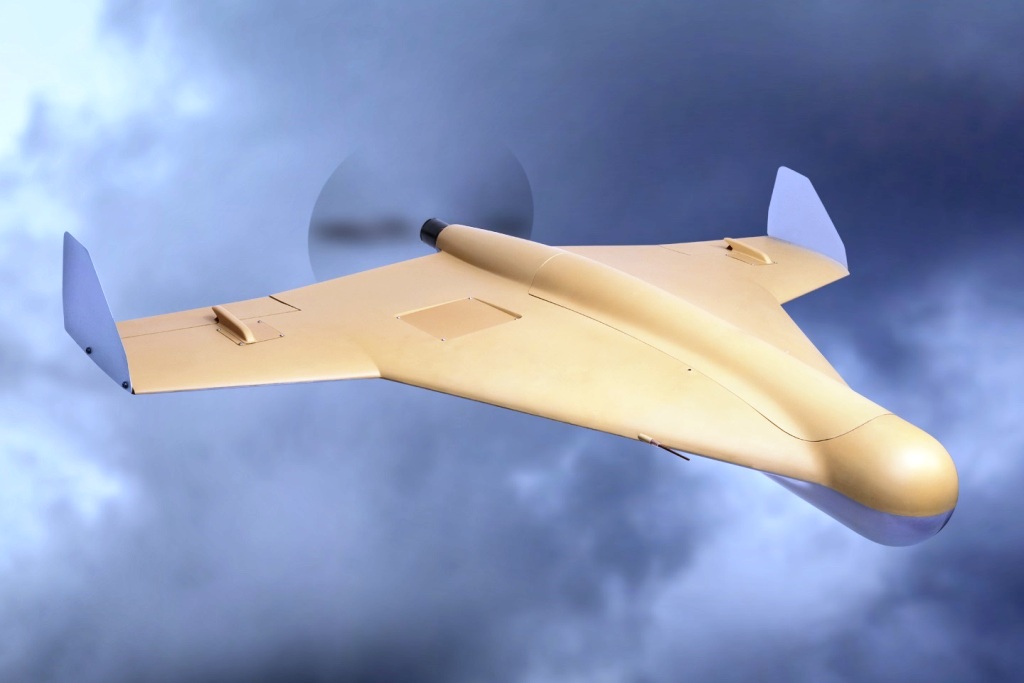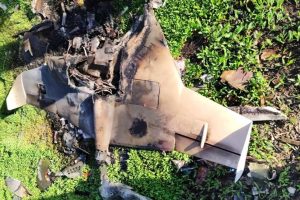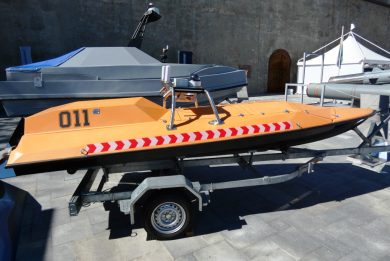
Russia receives improved KUB-BLA loitering munition
The Russian Armed Forces (RuAF) have taken delivery of an improved KUB-BLA loitering munition equipped with a more powerful warhead, the President of the Kalashnikov Concern, Alan Lushnikov, told Russia-24 in an interview on the 25th of December.
“Tests have been successfully completed, and the first batch is being shipped to the customer right now, I think, at this very moment. This is a serious step, because in fact it was a new product,” he said. It is not clear how the company has changed the warhead to improve its lethality, however videos of its use in Ukraine indicate that it is at times unable to damage a target unless it detonates in very close proximity.
The KUB-BLA is designed and manufactured by Zala Aero, a subsidiary of Kalashnikov, which in turn sits within Rostec. It is a delta wing design measuring 1.21 m x 950 mm x 165 mm. The original design carried a 3 kg warhead. Footage released by Kalashnikov suggests that the warhead is a high explosive fragmentation design with a blast radius of around 3 metres. Fragmentation in some earlier versions was provided by ball bearings, however the design has been modified since 2022 and by August 2023 versions were documented with a warhead called OFBCh-2.5. The explosive content is provided by OKFOL, an explosive formed from HMX that is relatively insensitive and yet a powerful explosive with an explosive yield 1.7 times that of TNT.

The airframe appears to be built from fibreglass and is carried in large shock-resistant cases until use. It is catapult launched and powered by an electric motor with a lithium ion battery located at the rear of the munition, that enables it to reach speeds of 80 – 130 km/h. It has a flight endurance of 30 minutes, according to Zala.
The targeting procedure requires the operator to manually set coordinates or to load an image of the intended target. It is fitted with a GPS receiver that presumably takes the munition most of the way to its target before infrared sensors are used to acquire it and conduct the engagement. It is not thought to carry any form of camera and seems to lack the ability to dynamically alter its flight path once it begins its approach to target. It is probable that the KUB is mostly used in combination with other reconnaissance drones. And footage released by the Russian MoD suggests that its effects are often combined with regular artillery effects.
The growing importance of recce-strike complexes
The KUB was introduced into service during the war having completed its state trials in 2021. Since then, the RuAF have made extensive use of loitering munitions such as KUB and Lancet to engage Ukrainian forces in tactical reconnaissance-strike actions. However, they mostly appear to be used by the Russian special forces and airborne units – the VDV. Both sides in the war have made extensive use of tactical reconnaissance-strike complexes. Loitering munitions paired with reconnaissance drones enable targets to be struck precisely in real time. This is in stark contrast to typical procedures for most forces that would require a request for fire support from a supporting arm.
The Russian defence industry has responded to this need and Kalashnikov reported that production of the munition had doubled “in recent months,” on the 19th of December. Zala Aero has focused significant effort on increasing KUB production since early 2023, which reflects the growing demand for loitering munitions within the RuAF. Development will also continue; Lushnikov indicated that efforts were underway to increase the range, lethality, and navigation capabilities of the KUB in interviews from November 2023.
An increase in lethality for the KUB is to be expected given the importance of tactical recce-strike. The goal, presumably, is to ensure target defeat or provide the munition with a greater ability to engage armoured targets.
Photos courtesy Kalashnikov and Ukraine’s 24th Mechanized Brigade



